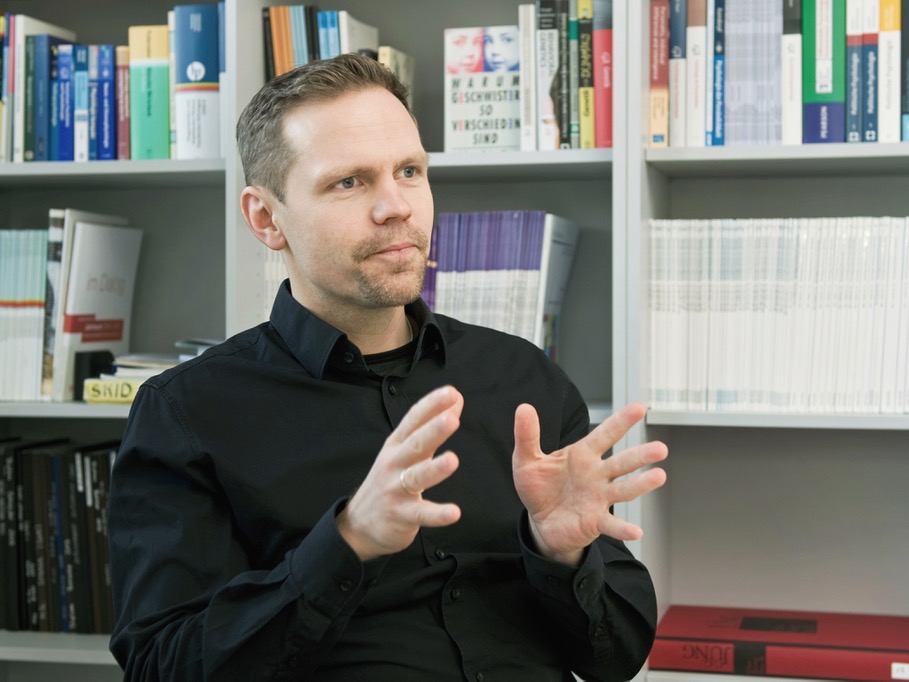
© shutterstock
How Do People Develop over a Lifetime?
The Department of Psychology is trying to find answers with twin research
How much does personality development depend on genes? More than assumed to date? These are the questions that the Bremen psychologist Professor Christian Kandler and his team are trying to answer. The special feature: he is observing the development of twins.
In the second survey wave of the SPeADy study, which is short for Study of Personality Architecture and Dynamics, the scientist wants to interview 600 twin families. The best possible way of doing this is online. Self-assessment is required. For example: Where would you place your social status on a ten-rung ladder? Psychological evaluation parameters in the questionnaires are fearfulness or recklessness, extroversion or introversion, questions on habits, and one’s own subjective attractiveness in comparison to others. That is all Professor Kandler will reveal. “We must not distort the results,” he says.
“Genes play a bigger role in this than previously assumed”
When hundreds of online questionnaires have been filled out, the head of the Personality Psychology and Psychological Assessment research group statistically evaluates them together with his SPeADy team, which is comprised of two scientific assistants and also students assistants. So far, they have come to the following conclusion: “Individual personality develops over a lifetime based on the interplay between predisposition and the environment. Genes play a bigger role in this than previously assumed”, according to Professor Kandler.
Role of Freedom and Coincidence
The psychologist explains the interplay using two examples: “Assume that a person has a genetic predisposition to obesity. In countries such as Germany, where food is available en masse, said predisposition can easily manifest. This is not the case in countries with famines.” Or: “Genetically predisposed cognitive performance potential can only be realized when the circumstances are favorable. Those who have no access to books and libraries will not be able to manifest their predispositions,” says the 38-year-old. Ultimately, humans have the freedom to develop and are free to choose the conditions that suit them. “This is true for friends that we choose, for example.”
A further factor that contributes to how adolescents develop into the people that they later become is coincidence. “Two genetically identical, monozygotic twins share the same environment from a very early stage in their development, namely when they develop together in the womb. However, they cannot be in the same place at the same time. The leads to differing metabolic supplies in the womb, which can influence the uniqueness of skin wrinkle development. Regardless of how similar monozygotic twins look at first sight, this is why they have unique fingerprints. Other similar environmental coincidences can occur over the course of a life. They explain why twins become increasingly different, both physically and psychologically.”

©Harald Rehling
Temperament, motives, and values form the core of the online tests. “The twin research helps us to find out how predisposition and environment interact,” says the expert. Due to the division of a fertilized egg cell, monozygotic twins are entirely genetically identical. However, it is still unclear today why, when, and which cell can divide: “Probably a coincidence!” It is interesting that monozygotic twins show opposite physical features more frequently. “One has cowlicks and their parting on the right, the other one on the left, one is right-handed, the other one left-handed,” reports the expert.
Dizygotic twins differ to monozygotic twins. On average, their genetic dispositions are just as similar as those of “normal” siblings. However, they are the same age and go through the important phases of development at the same time. Therefore, they form a significant reference group for the monozygotic twins and are just as valuable for the investigation into the interplay between predispositions and environment.
Strange Bot Participation
The online process in the working group’s research does bring some difficulties with it. “We sometimes have conspicuous participation,” says the psychologist. Said participation comes from bots, which are automatically operating computer programs with strange addresses. “Our alarm bells start to ring in such cases.” Background: Those who take part in the survey receive a universally applicable 10-euro voucher. “This adds up to a large amount if enough fake replies are sent.”
The scientists mentions another problem: During his previous research in the frame of the TwinLife project at the University of Bielefeld, it was easy to obtain the contact details of those twins who had agreed to contact for research purposes from the resident’s registration office. He had the same positive experience in Berlin, Düsseldorf, and Essen. “Why can the resident’s registration office in Bremen not do the same?” wonders the researcher, who was appointed at the local university in 2018.
The German Research Foundation is funding the SPeADy project until 2022. Volunteer participants are still very welcome, states Professor Christian Kandler.